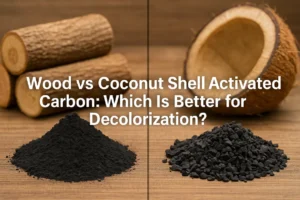Filtering edible oil with activated charcoal is a common food processing technique that enhances the quality and safety of the oil. Activated charcoal has a strong adsorption capability, effectively removing impurities and harmful substances from edible oil, making the oil purer and healthier.
The principle of filtering edible oil with activated charcoal involves using the adsorption properties of the activated carbon to attract impurities and harmful substances in the oil to the surface of the carbon, which are then filtered out through a filter, thereby improving the quality and safety of the edible oil.
Compared to traditional filtering methods, filtering edible oil with activated charcoal has many advantages. First, activated carbon has a high adsorption capacity, effectively removing various impurities and harmful substances, ensuring the quality and safety of the edible oil. Secondly, activated charcoal filtration can achieve continuous production with high efficiency and a more stable and controllable process. Furthermore, activated carbon filtration can reduce the loss and waste of edible oil, thus lowering production costs.
During the process of edible oil filtration with activated charcoal, certain considerations must be taken into account. First, an appropriate activated charcoal material must be selected, ensuring its adsorption capacity and pore structures meet the filtering requirements. Secondly, the quality and stability of the activated charcoal must be ensured to avoid poor filtering results due to quality issues of the activated charcoal. Additionally, the filter must be cleaned and replaced regularly to ensure the effectiveness and lifespan of the filter.
In conclusion, edible oil filtration with activated charcoal is a common and effective food processing technique that improves the quality and safety of the edible oil. Choosing the appropriate activated charcoal material and ensuring the quality and stability of the activated charcoal are keys to ensuring filtering effectiveness and lifespan. Concurrently, regularly cleaning and replacing the filter are also essential measures to ensure filtering effectiveness and stability.



